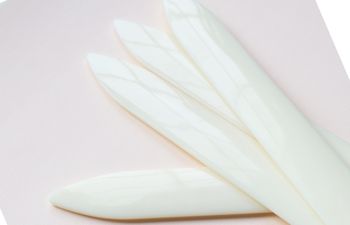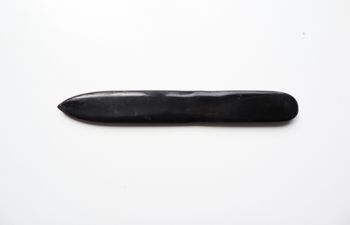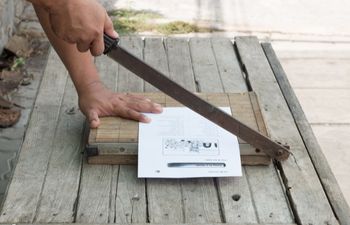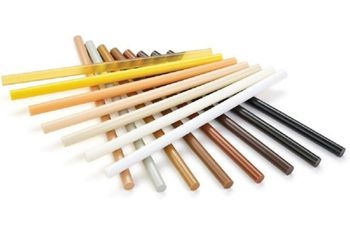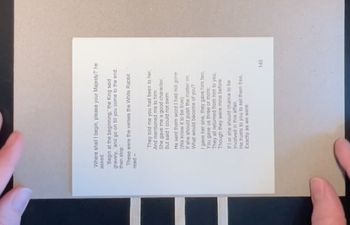In the world of book making, bone folders are used to score and crease paper. For most binders, a “bone” folder is just that – a folder made from the bone of a cow, deer or elk – but did you know that bone folders can also be made from materials other than bone? In this post, I’ll share 5 unexpected materials used to make bone folder substitutes and then let you decide which one you’d like to try!
What makes a material “unexpected”?
The most commonly used materials for bone folders are the leg bones and horns of cow, deer or elk as well as a polymer material called Teflon. An unexpected material is one that falls outside of these three while still meeting the the top 5 desired properties for a good bone folder. These make wonderful bone folder substitutes if you’re concerned about animal products.
ABS Plastic
ABS plastic definitely feels like plastic, but is very strong and can withstand heat up to 221 degrees Fahrenheit. This makes it a good choice if you’re looking for a very inexpensive, vegan-friendly bone folder.
ABS plastic is smooth and easy to make in any shape or size, so you can usually find one for every need. Just be sure to check each end of the folder to see if the shape meets your needs. For example, my ABS folders have a 1mm thick tip, which isn’t my favorite because I prefer it to be more pointed. That said, it’s perfect for scoring and helps avoid marring paper.
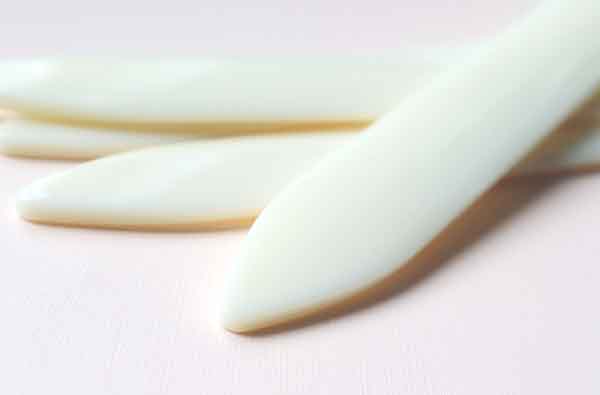
Ivory
Ivory is worth mentioning because it’s all over the Internet in various academic contexts. That said, it’s illegal due to the harm it has caused animals with ivory teeth, tusks and horns. I do not recommend it. In terms of a scoring and creasing tool, there are much better, less harmful and less expensive options. Below is an image I found (if this is your image, please let me know – there were no credits – and I would like to recognize you and ask permission) are a few examples of these antique tools.
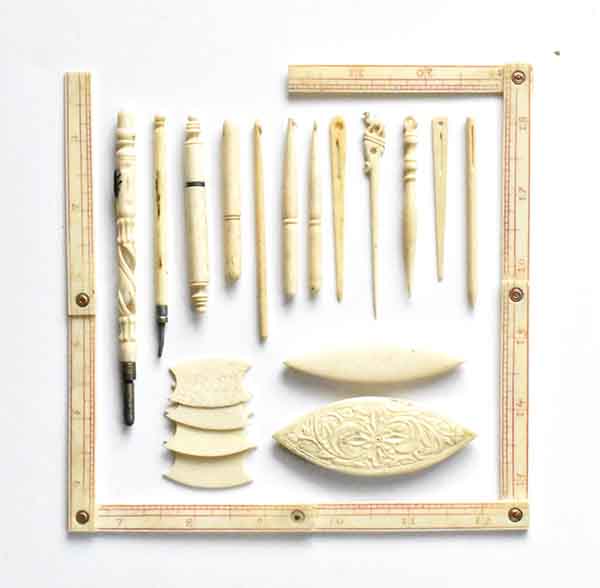
Wood
Hard woods like hickory, maple, oak and bamboo are strong and work well for bone folders, but are expensive to create. If you have any talent making your own tools + a few downed maple trees or a bamboo forest nearby, you are in luck!
It’s worth noting that Eastern countries have used bamboo folders for many years because of their durability. The only drawback? They’re very hard, so it can be tough to form a pointed tip.
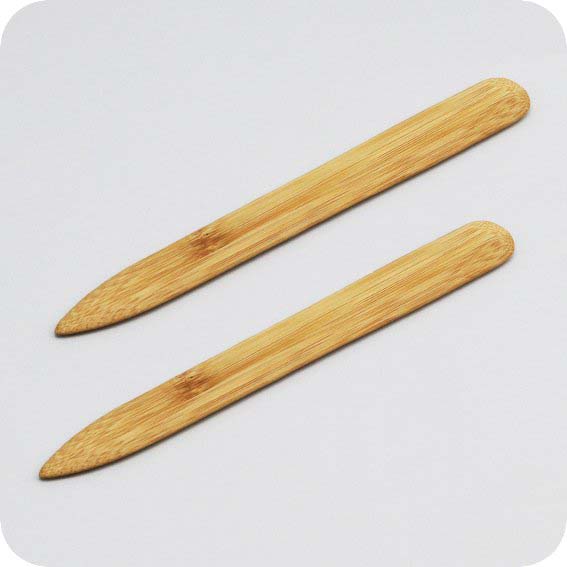
Rock
Some bone folders are carved from agate, which is formed in volcanic and metamorphic rocks. Agate is primarily made of quartz and chalcedony, which are extremely strong. They have a nice weight and are all unique, one-of-a-kind folders with lots of different color variants.
Jade has also been used, but is expensive to procure and thus very rare.
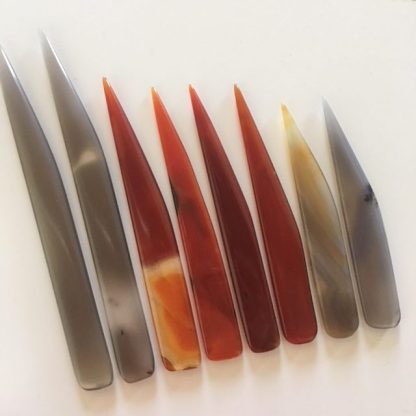
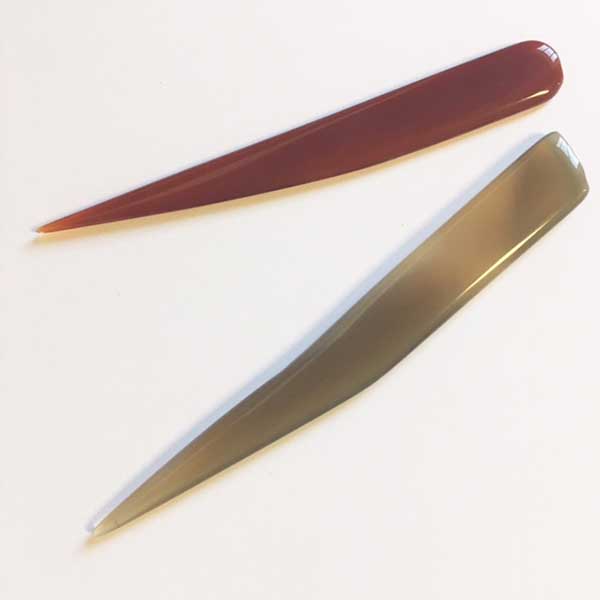
Metal
Metals like silver, brass, steel and aluminum have also been used to make bone folders. Their strength and durability is incredible, but metal is subject to oxidation over time and can leave marks on paper.
Interestingly enough, the first metal bone folder patent was obtained in 1889 by J.C. Forman of Cleveland, Ohio. He called it the “Excelsior Metal Bone Folder” and included alloy metals to help with resistance to oxidation. Many book binders love the design and have tried to emulate it themselves using other materials. There’s just no end to how creative we can be!
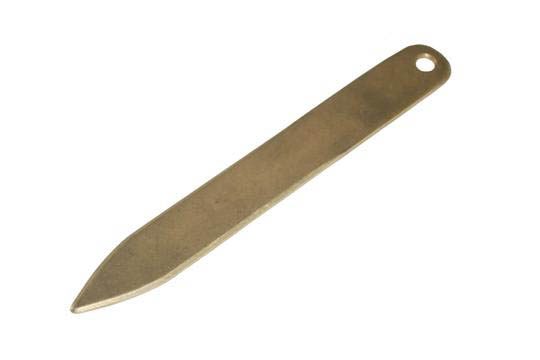
So, what do you think? Do you have any handmade tools of your own that use unexpected materials? Pop over to Instagram or Facebook and share your bone folder substitutes with me!
Resources
- If you’re looking for tools, I offer a complete, hand-curated set of bookbinding tools identical to those used in my own bindery.
- What makes a “good” bone folder? Find out in my Top 5 Features to Look for in a Bone Folder.
- Are you new to bookbinding? Check out my New Bookbinder Guide for helpful information.
Take care!
ALL my best,
Misty
